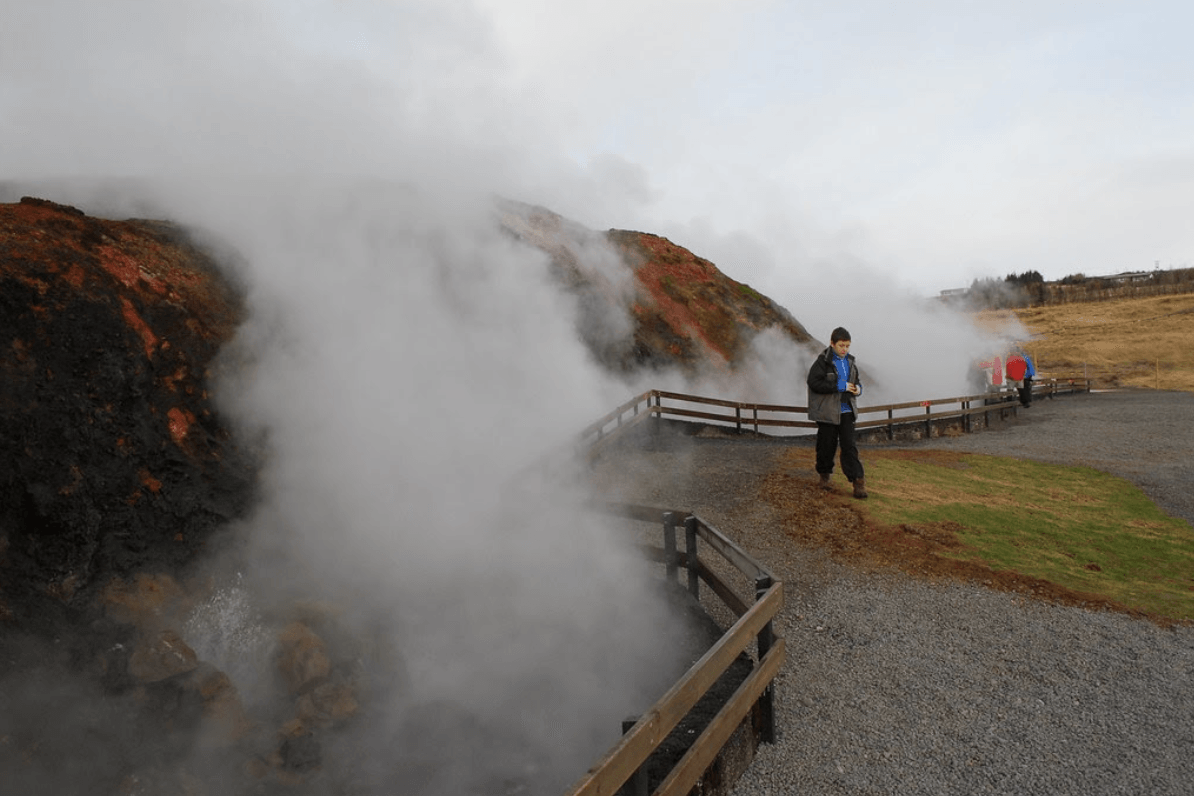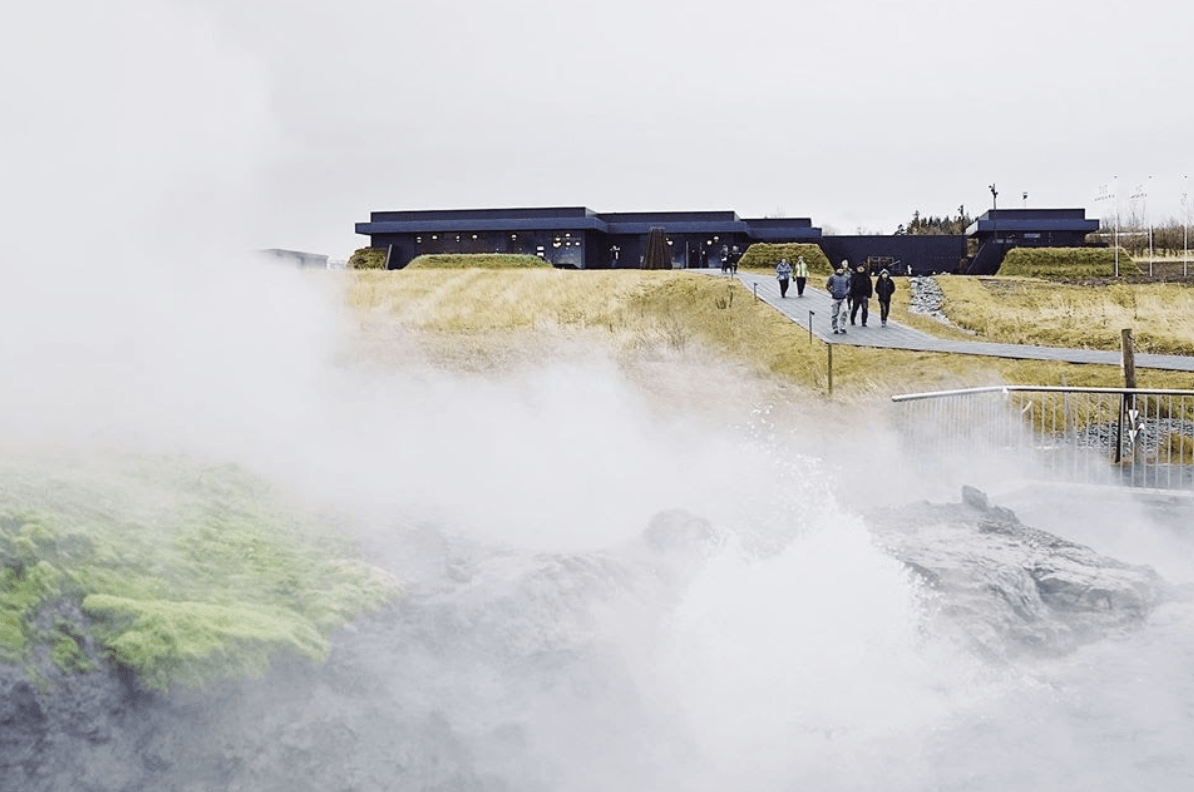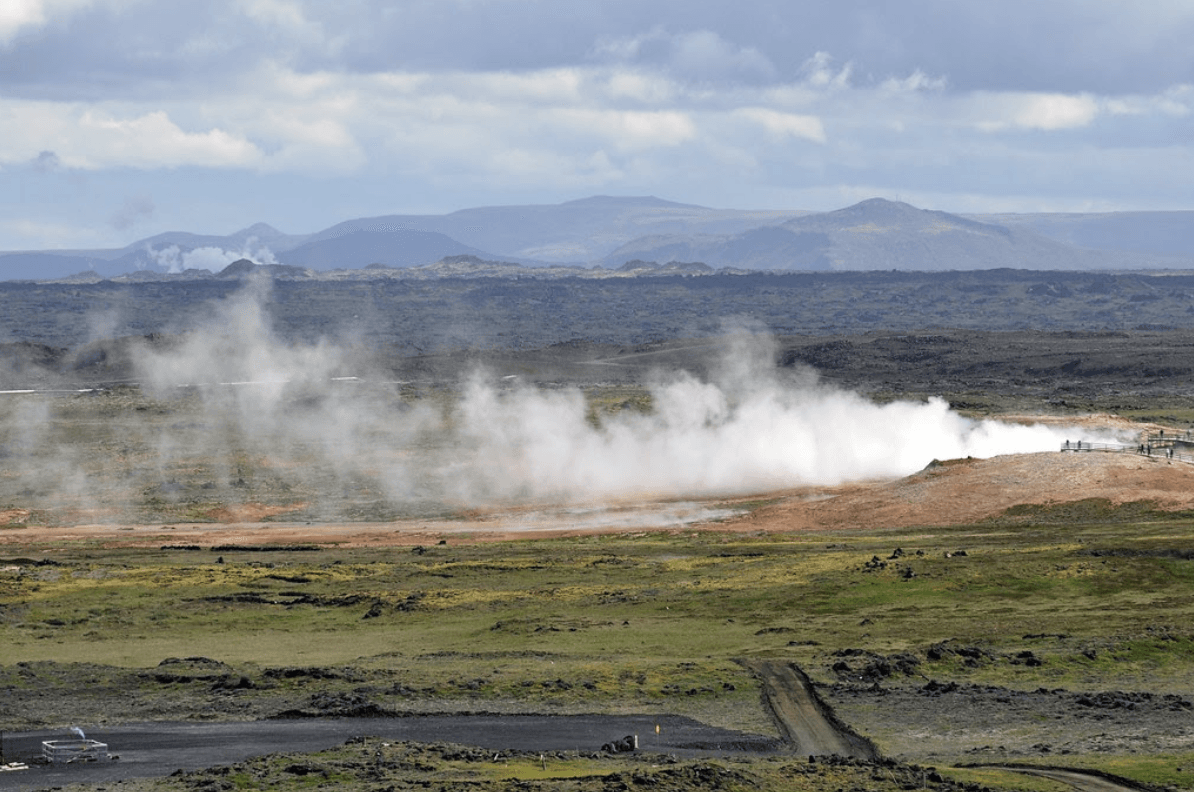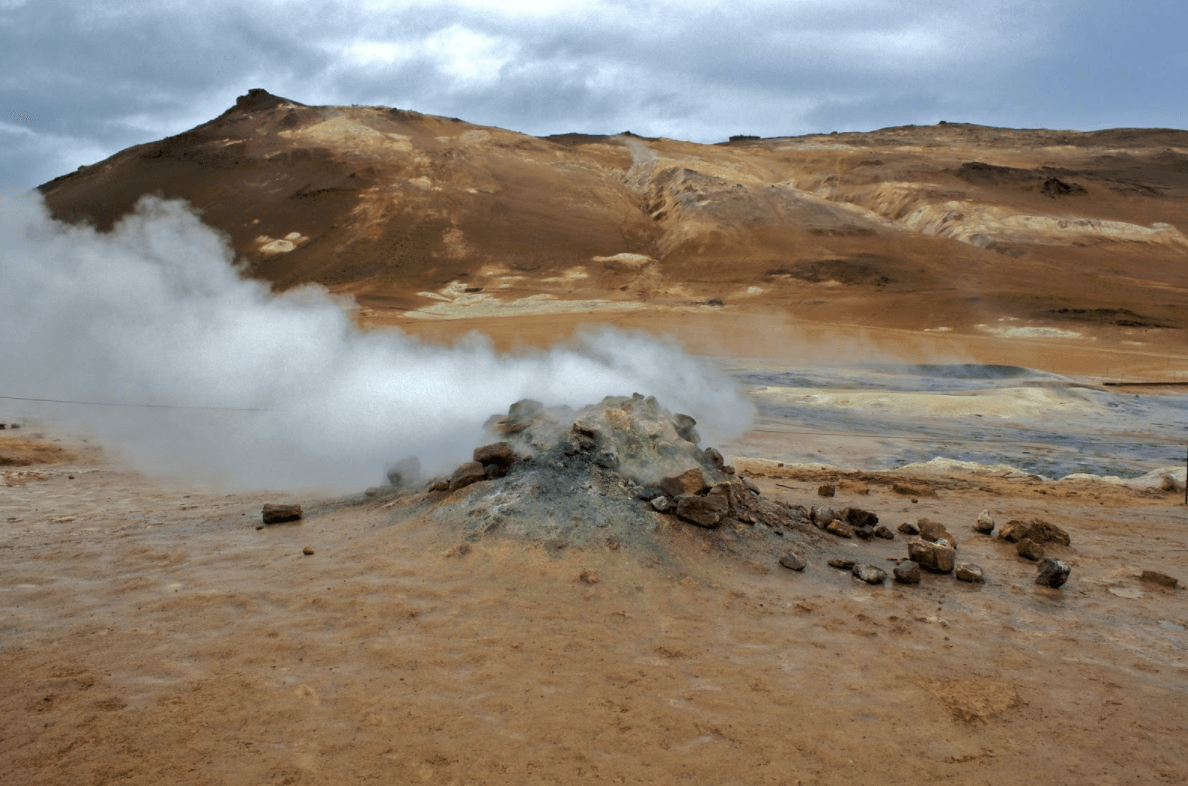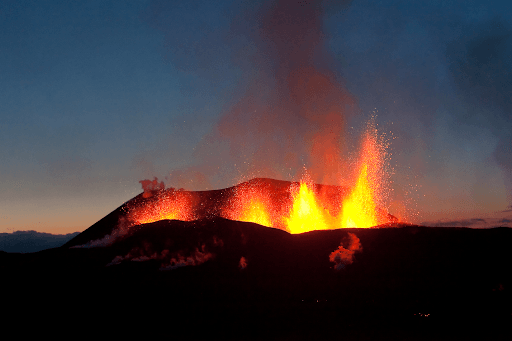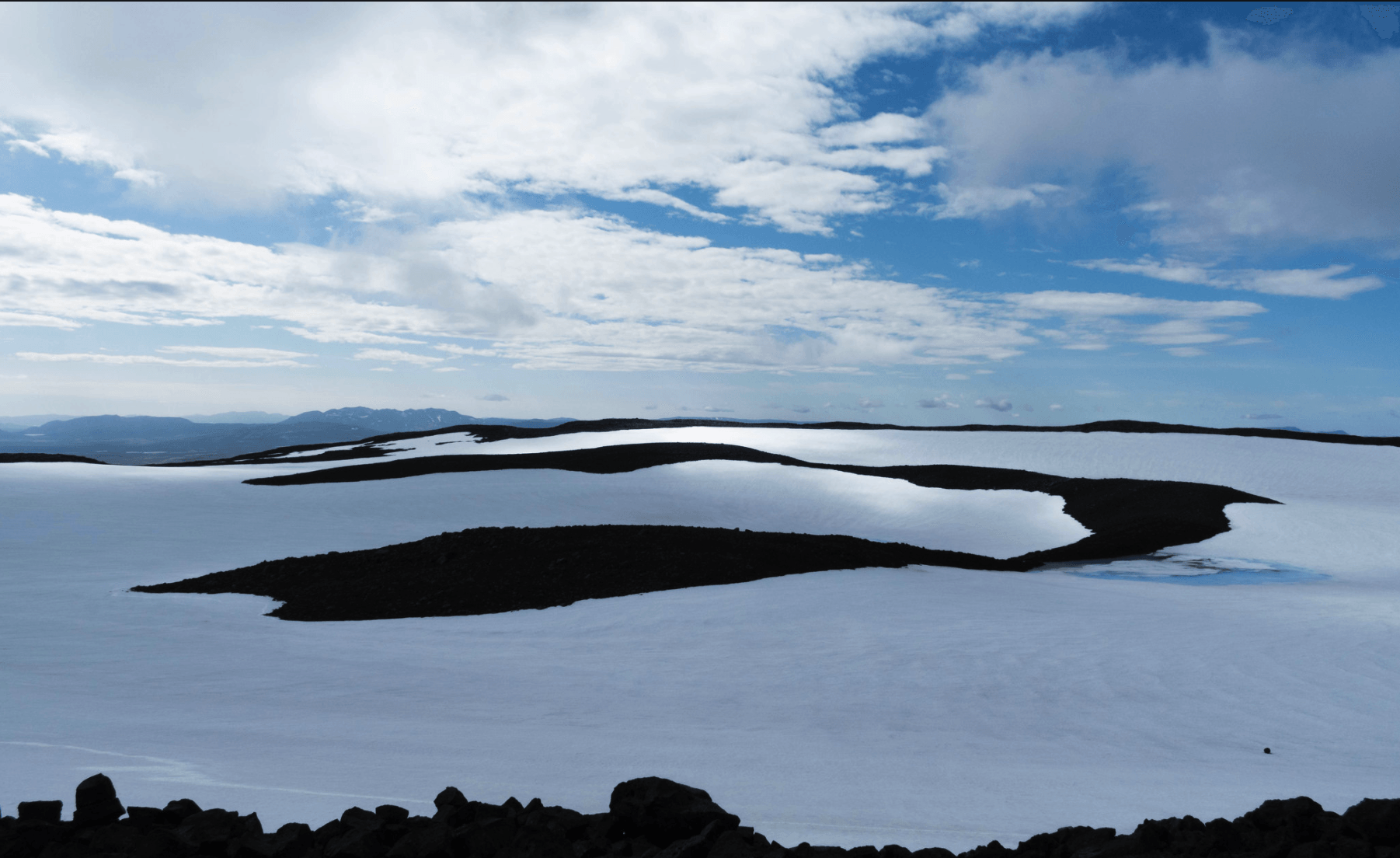Everything You Need to Know About Deildartunguhver (and other Hot Springs) in Iceland
6. júlí 2020
Everything You Need to Know About Deildartunguhver (and other Hot Springs) in Iceland
Author: Michael Chapman
Where is the Deildartunguhver hot spring in Iceland, and what is the best way to visit? Just how powerful is Deildartunguhver, and can you find hot springs in Iceland elsewhere? Read on to find out more information about Deildartunguhver (and other Hot Springs) in Iceland.
Bathing in geothermal hot springs regularly crops up among the most exciting activities one can participate in when visiting Iceland.
Just like the Midnight Sun, or the majestic Northern Lights, geothermal spas have become synonymous with this small Nordic isle.
Many guests are looking to keep their experience as authentic as possible, relaxing in waters that are naturally drawn from beneath the earth.
It should be made clear that not all hot springs are safe to enter.
That’s not to say guests won’t find some dotted across the island—noticeably, in the Highlands or Reykjadalur Valley—but those looking for a natural experience paired with well-managed luxury will find specialised spas and resorts the most rewarding.
For instance, many travellers passing through the sublime landscapes of West Iceland might notice clouds of white steam billowing on the horizon.
This is because they are nearby to the famous Deildartunguhver
hot spring, one of the area’s best, yet lesser-known natural attractions. Visiting this site is made all the better given the luxurious Krauma Spa sits just on its doorstep, offering both sightseeing and bathing opportunities.
The white steam of Deildartunguhver. Photo: Flickr. martin_vmorris
What is the Deildartunguhver hot spring?
Located in Iceland’s steamy Reykholtsdalur Valley—some 97 kilometres (60 miles) from the historic Reykholt village—Deildartunguhver is considered Europe’s most powerful hot spring.
This is due to its rapid flow rate, pushing 180 litres (380 pints) of hot water per second.
This water temperature measures at a staggering 97°C -100°C (207°F - 212°F), making it the perfect energy source for the neighbouring geothermal baths, Krauma Spa.
Given the high temperature, Krauma Spa mixes Deildartunguhver’s water with that from Okjökull—an ancient glacier that, sadly, lost its official glacier-status due to diminishing mass.
(As a side note; the depletion and ultimate death of Okjökull is one of this country’s best-known examples as to the genuine consequences of a steadily warming climate.)
This perfected blend of glacial and geothermal water creates the optimum bathing temperatures—wonderfully suited for travellers looking to sit back and relax after a long day exploring the many treasures of West Iceland.
Deildartunguhver is always billowing. Photo: Krauma
As such, anybody showering within a 64 kilometre radius of the hot spring will be doing so in water from Deildartunguhver.
Unlike Iceland’s most famous hot spring, Strokkur on the Golden Circle
route, Deildartunguhver does not eject water at various intervals but instead remains billowing at a constant rate.
Due to the water’s extreme heat, there is always the danger that guests venturing too close will inadvertently injure themselves.
Because of this, a series of wooden walkways and barriers have been erected to keep observers at a safe distance and out of harm’s way.
Other attractions nearby to Deildartunguhver include the likes of Hraunfossar and Barnafoss waterfalls and the impressive Víðgelmir lava cave.
The History of Deildartunguhver Hot Spring
The Deildartunguhver hot spring has long been of value to the Icelandic people.
In the past, residents of the local area used the spring to wash their clothes, as well as provide heat to their homes.
Evidence at Deildartunguhver exists of an 80-90-year-old wooden duct built precisely for this purpose, travelling from the depths of the hot spring to a former home around 600 metres away.
The luxuries that this would have provided—a personal sauna, hot showers, as well as the means to steam food—would have been considered atypical of Icelandic homesteads at the time.
An old photograph of the local Deildartunguhver family. Photo: Krauma
According to records, the land on which the Deildartunguhver hot spring sits was owned by a woman named Sigurbjörg Björnsdóttir (1886-1984), the matriarch of a large local family. Her family was said to have been in control of the land for nearly 200 years.
With such a deep and lasting connection, it should come as no surprise then that many claim Sigurbjörg knew better than anyone as to the hot spring’s beneficial healing powers.
Eventually, the land was expropriated by the Icelandic state. This has been a trend for multiple decades now, with the most famous example being that of Gullfoss waterfall.
Be that as it may, many consider Sigurbjörg’s vision to have been a leading cause behind the construction of Krauma Geothermal Nature Baths, a modern and luxurious facility first opened in 2017.
What does Krauma Geothermal Nature Baths offer?
An aerial shot of Krauam. The steam of Deildartunguhver can be seen in the foreground. Photo: Krauma
Many visitors consider Krauma to be a quieter, smaller and cheaper alternative to the more famous Blue Lagoon Spa, which is found on the Reykjanes Peninsula.
Krauma offers the rare benefit of being able to actually see the source of this heat while bathing, making for a somewhat dramatic relaxation experience.
For anyone looking for a calm and tranquil bathing experience amidst Iceland’s nature, Krauma will not disappoint.
The pools at Krauma Spa. Photo: Krauma
There are a total of five natural geothermal baths, two saunas, a cold-water tub and a dedicated relaxation room, complete with a flickering fireplace, meditative music and designated lounge chairs.
The various hot pools come in different levels of heat, with the cold-tub explicitly designed in mind to get the blood circulating in between dips.
Relaxing in such incredible surroundings is sure to build up an appetite. Thankfully, Krauma boasts its own sophisticated restaurant.
Capable of seating up to seventy people inside, and 60 people on its outside terrace, this fine-dining establishment focuses on serving quality meals made with the freshest local ingredients.
Guests can choose between such main dishes as slow-cooked lamb fillet, spicy cajun salmon, homemade soups and burgers.
As is to be expected, there are also several vegetarian dishes available, as well as desserts, light snacks and a plethora of hot and cold beverages.
Guests enjoying food at Krauma’s restaurant. Photo: Krauma
Are there any other Hot Springs in Iceland?
If, by this stage, your travel itinerary is so packed that visiting Deildartunguhver is simply not possible—have no fear!
There are plenty of other popular locations to see hot springs in Iceland, each offering their own fantastic insights into the terrestrial power that bubbles beneath this island’s surface.
The steaming landscapes of the Reykjanes Peninsula. Photo: Flickr. Jennifer Boyer.
The three best-known examples include those in the Reykjanes Peninsula and in Geysir Geothermal Valley—both found in the South-West—and Námaskarð Pass, located beside Lake Mývatn in North Iceland.
The most famous of Reykjanes’ hot springs is Gunnuhver, found a short distance from Reykjanes lighthouse.
According to legends, this steaming region is named after a young woman who was tricked into falling into one of the hot springs—she is said to still haunt the Reykjanes Peninsula today.
Strokkur (“churn”) is the superstar of Geysir geothermal valley. Visitors to this attraction will witness a powerful plume of water ejected from the ground every ten minutes or so.
This stunning geothermal eruption sees water reaching heights of up to 20 metres in the air.
Strokkur erupts. Photo: Small Group Golden Circle Tour with Snorkelling in Silfra Fissure
Naturally, Strokkur has become one of Iceland’s most widely photographed features and is often used to publicise the country’s staggering nature.
Geysir geothermal valley makes up one third of the popular Golden Circle sightseeing route, alongside the UNESCO World Heritage site, Þingvellir National Park, and Gullfoss waterfall.
Those visiting Námaskarð Pass will, no doubt, find themselves in awe of the vivid red and orange landscape that surrounds its many bubbling hot springs and steamy calderas.
Surrounded by such otherworldly terrain, many guests comment that Námaskarð appears more like the planet Mars than anywhere on earth.
The red landscapes of Námaskarð Pass. Photo: Flickr. Bjarki Sigursveinsson
Lake Mývatn and its surrounding attractions—Námaskarð, the Dimmuborgir rock formations and Grjótagjá cave—can be seen as part of the Diamond Circle sightseeing route.
Other points of interest on the Diamond Circle include the ‘Whale Watching Capital of Europe’, Húsavík town, the horseshoe shaped canyon, Ásbyrgi, and the ever-impressive Dettifoss waterfall.
It should be noted that natural hot springs found out in Iceland’s wilderness exceed temperatures comfortable for bathing. In fact, most are so hot that attempting to do so would likely cause serious injury.
With that said, there are a number of natural hot pools where the water temperature is safe to enjoy. These include some of those found in Landmannalaugar (in the Highlands), the steamy warm river in Reykjadalur valley, and Hellulaug in the Westfjords.
Before setting out to find a natural hot pool for yourself, make sure to do some preparation beforehand to ensure your visit will be safe.
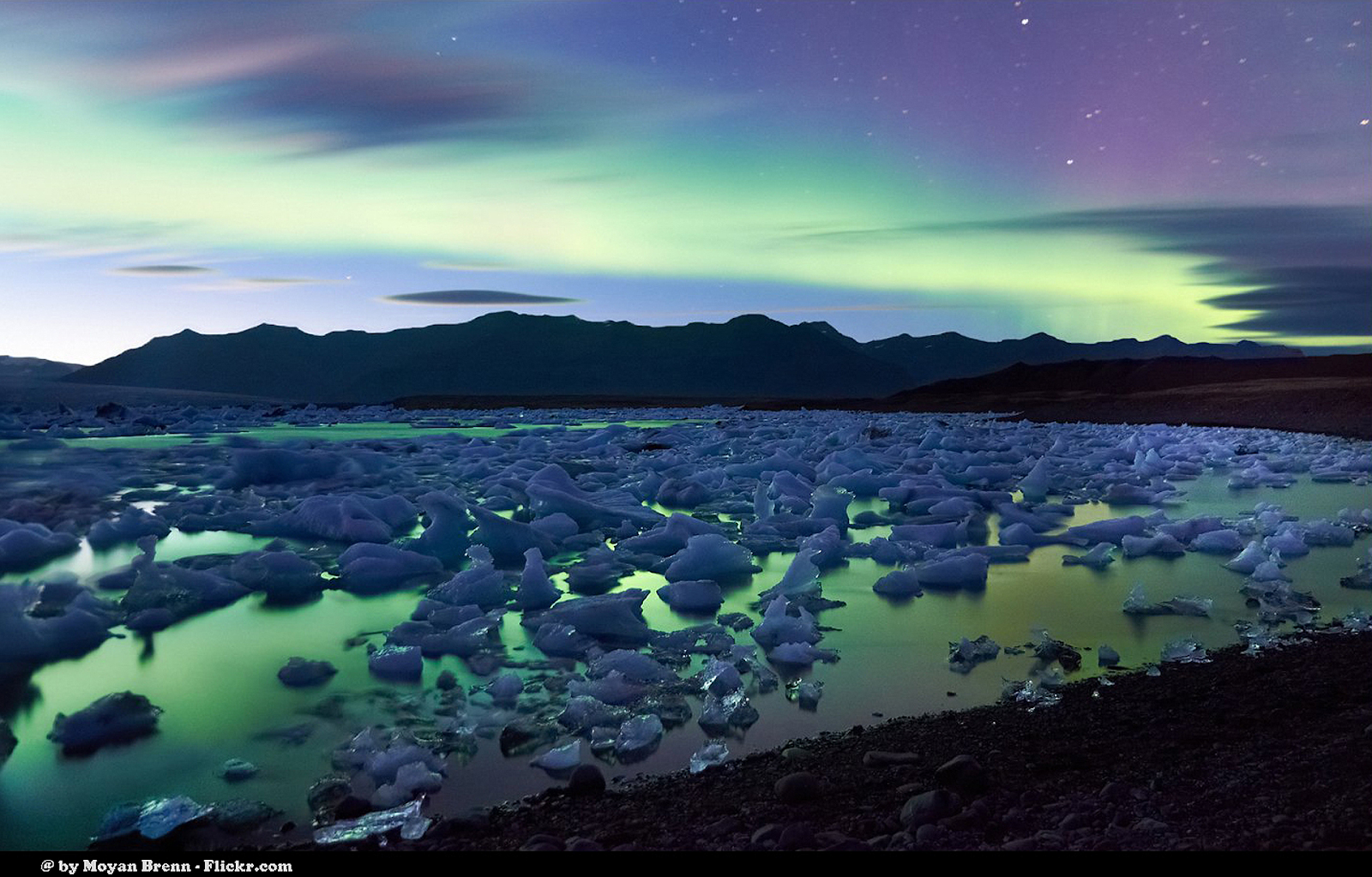
Iceland has long been regarded as one of the ultimate countries to tick off travellers bucket lists. From watching the famous Northern Lights to exploring glaciers, volcanoes, mountains, hot springs, tearing tectonic plates, black sand beaches and much more it’s clear to see how it earned its reputation.
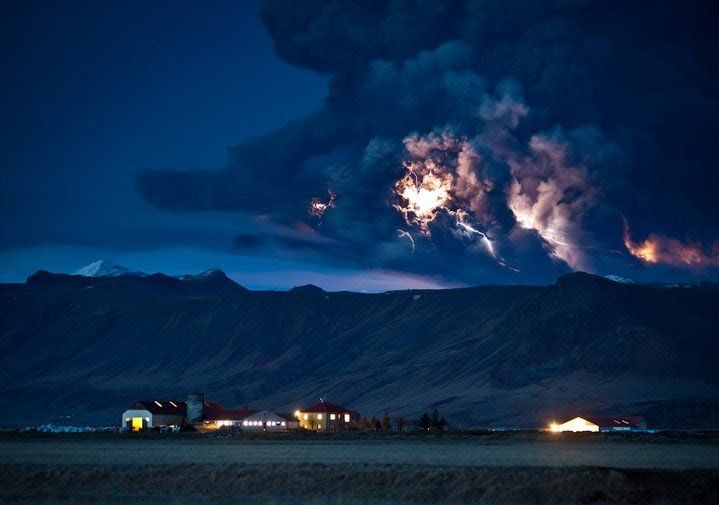
What caused Iceland’s Eyjafjallajökull volcano to erupt in 2010, and what were the consequences? Can Iceland expect more volcanic eruptions in the future? Where can you learn more about these fascinating geological forces? Read on to find out all there is to know about the 2010 Eyjafjallajökull eruption in Iceland.
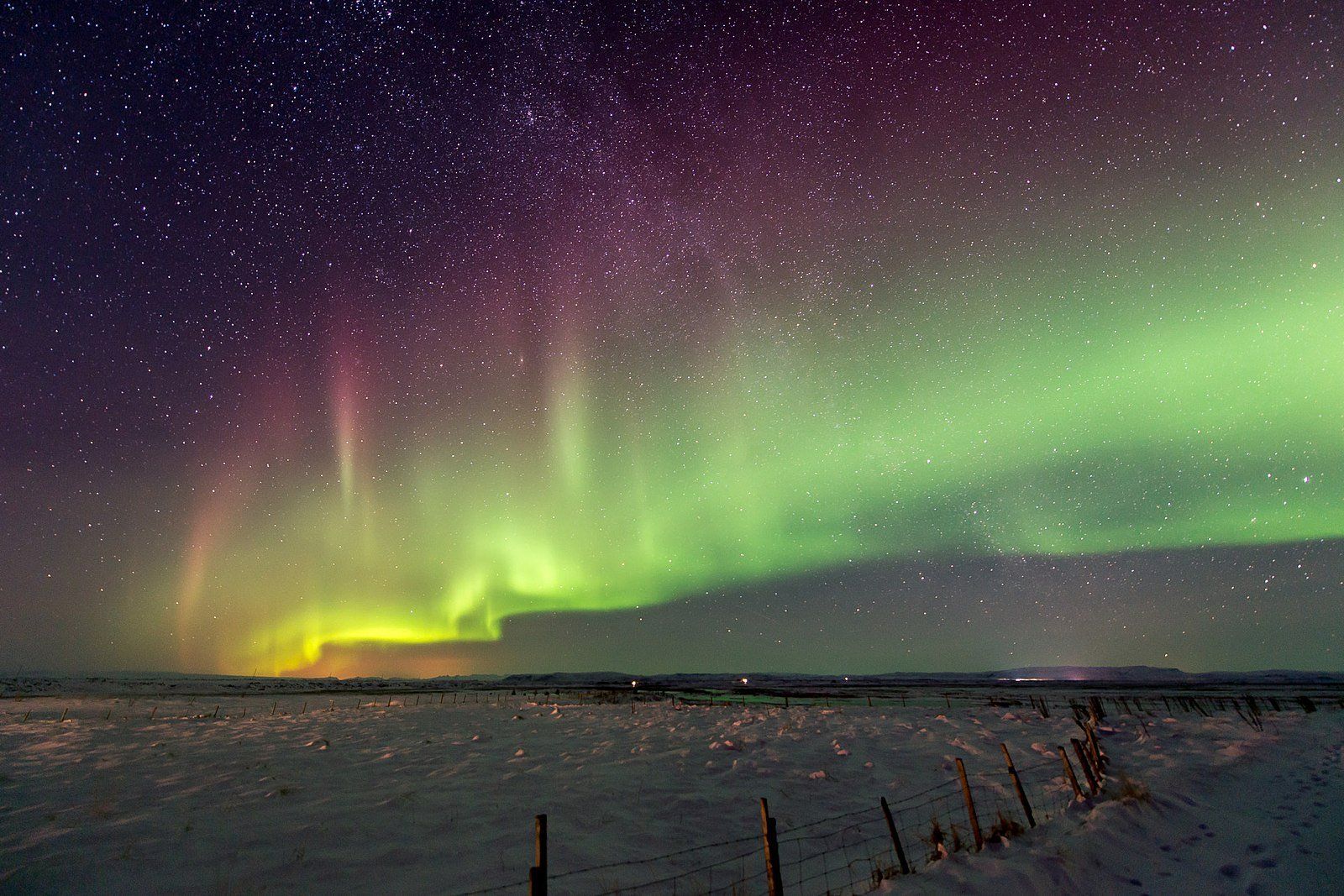
Situated in a perfect spot in the auroral oval, as well as being isolated in the middle of the Atlantic and just outside the realms of the Arctic Circle provides the best climate, tranquility and wondrous environments to watch nature's greatest show play out above our heads. Without the rich folklore, spectacular terrains and passionate Icelanders, watching the Northern Lights during a winter in Iceland just wouldn’t be quite as special.
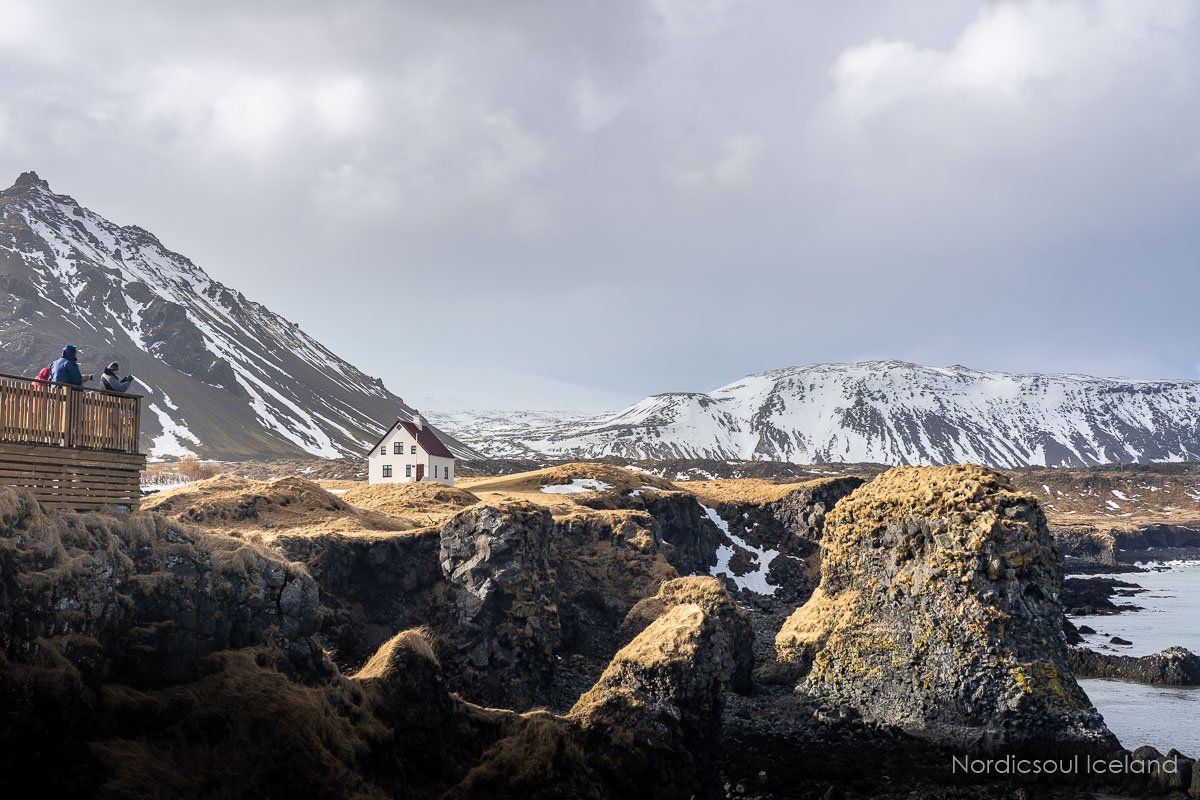
If you’re planning a visit to Iceland, then the west of the country needs to be high on your list. With an abundance of rugged landscapes of mountains, lava fields, waterfalls, lava caves and a tranquil spa destination, it’s the perfect region to take your time exploring.
However, what are the best things to sightsee in West Iceland? Where do you definitely need to stop off at? What are the hidden gems of this region? And, what do locals recommend for the optimum experience?
In this blog, I will answer all these questions and more, from the geological and volcanic wonders to the most incredible viewing points to get the very best from your trip to West Iceland.
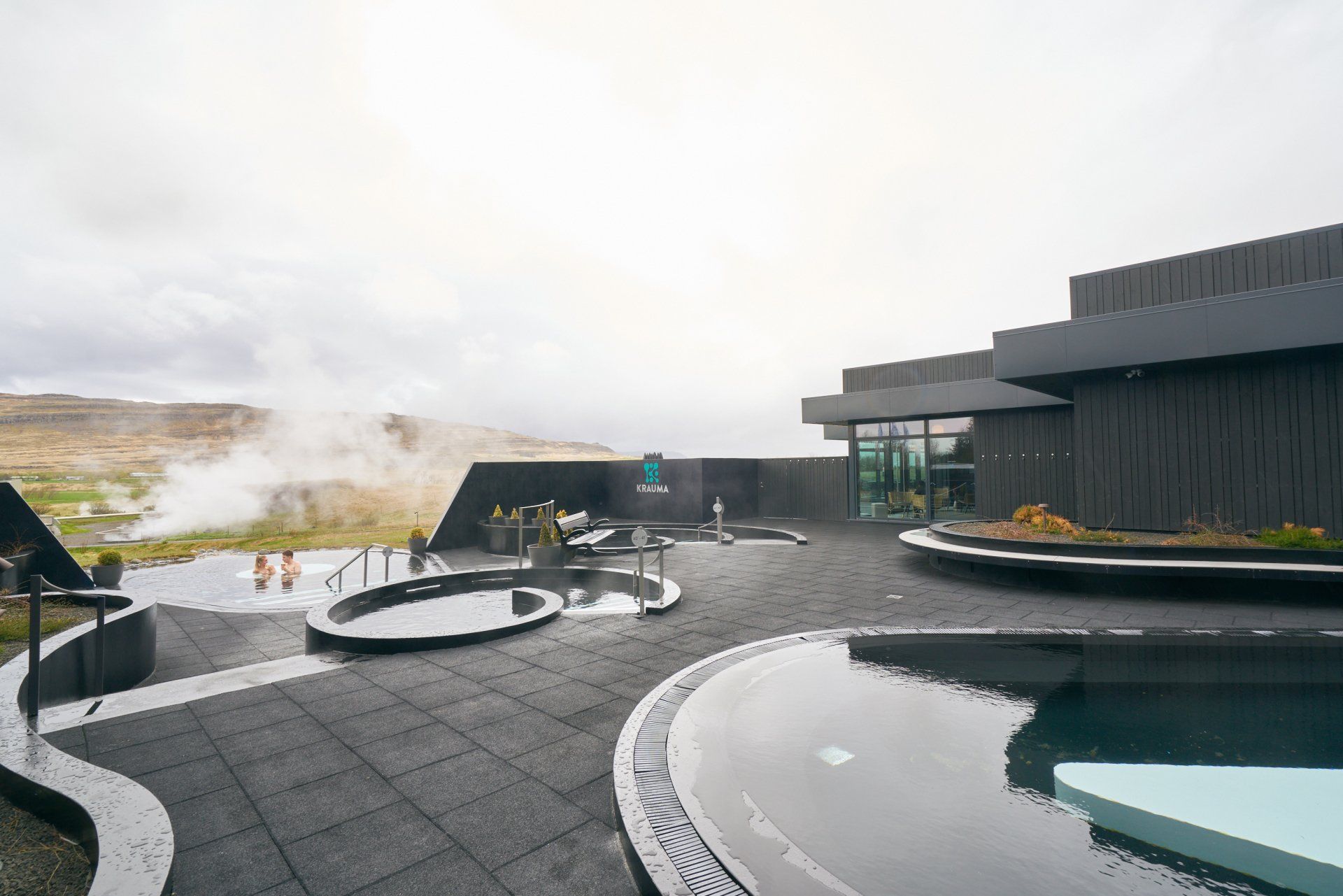
Did you know that bathing in geothermal water is an Icelandic tradition that dates back to the twelfth century and the actual settlement of Iceland? Flashforward to present day, and one of the main appeals for travellers coming to Iceland is still the wonder of bathing in geothermal water. Offering slightly more comfort than the primitive pools of the middle age, today’s geothermal spas in Iceland have made way for luxury experiences embedded in raw Icelandic nature. Continue reading to find out how the geothermal spa in Iceland became what it is today.



